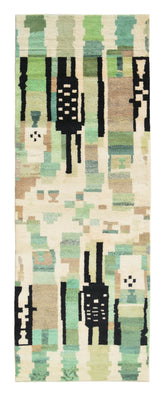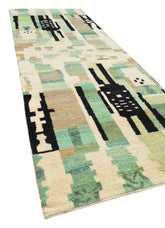Why Handmade Moroccan Rugs Will Never Be The Same Again
We all love a rug that can instantly spruce up our living space; however, it's important to understand the backstory of the product we're buying. For centuries, handmade rugs have been a symbol of pride and craftsmanship in Morocco. However, in recent years, technology has changed that landscape, and artistry is gradually fading. From industrial looms to automated processes, handmade Moroccan rugs will never be the same again.
This article will examine Moroccan rug production's history and explore the recent changes. We will also look at how this change has affected both consumers and producers and what may be done to protect conventional production techniques.
The history of Moroccan rugs

Moroccan rugs have been handmade by skilled artisans using traditional techniques for centuries. The result is a high-quality product that is unique and full of character. However, the rise of machine-made rugs has threatened the future of these handcrafted works of art. Machine-made rugs can be produced quickly and cheaply, often sold at a lower price than handmade rugs. This has made it difficult for Moroccan rug makers to compete and has led to many of them giving up their trade.
The Impact of Technology on Moroccan Rug

Moroccan rugs are world-renowned for their intricate designs and vibrant colors. But the traditional methods of making these rugs are under threat from modern technology. Making a Moroccan rug begins with the shearing of sheep wool dyed and spun into thread. The thread is then hand-woven on a loom to create the rug's design.
Mass-produced machine-made rugs are now replacing this centuries-old method. These rugs may look similar to their handmade counterparts. Still, they lack a handmade rug's uniqueness, quality, and durability.
The following are how Moroccan rugs have evolved over the years:
- Moroccan rug has evolved from being a functional item to a luxury item. In the past, Moroccan rugs were made by hand and were often used as floor coverings or blankets. Today, Moroccan rugs are made by machines and are mostly used as decoration.
- The change in production methods has resulted in a change in the quality of Moroccan rugs. In the past, Moroccan rugs were made with natural fibers such as wool or cotton. Today, most Moroccan rugs are made with synthetic materials such as polyester or nylon.
- The change in materials has also resulted in a change in the appearance of Moroccan rugs. In the past, Moroccan rugs were often colorful and had intricate patterns. Today, many Moroccan rugs are more subdued in color and have simpler patterns.
The loss of traditional rug-making techniques is affecting Moroccan artisans and the economies of rural communities that depend on selling these rugs for their livelihoods. As more and more consumers opt for cheaper machine-made alternatives, the future of Moroccan rug-making is at risk.
How the market has changed

As anyone in the handmade Moroccan rug business will tell you, the market has changed dramatically in recent years. What used to be a thriving industry is now struggling to keep up with the demand for mass-produced machine-made rugs.
The recession has hard-hit the handmade Moroccan rug market. Many rug makers have been forced to change their business model or close shop altogether. The days of being able to sell handcrafted rugs for top dollar are gone, and it's becoming increasingly difficult to find customers who are willing to pay for quality over quantity.
This shift in the market has had a ripple effect on the entire industry, from the sheep herders who raise the sheep for the wool used to make the rugs to the dyers and weavers who create them. Even the sellers of Moroccan rugs are feeling the pinch as more and more customers opt for cheaper machine-made alternatives.
It's a tough time for those making handmade Moroccan rugs, but there's still hope that this traditional craft can survive in today's market. By adapting to the changing needs of consumers and promoting the unique benefits of handcrafted rugs, this centuries-old art form can continue to thrive for many years.
What the future holds for a Moroccan rug

As Morocco Rug continues to grow in popularity, the future looks bright for this unique and handcrafted product. With more and more people searching for ways to add a touch of luxury and style to their home décor, Moroccan rugs will continue to be a hot item.
What's even more exciting is that as the demand for these beautiful rugs increases, so does their availability. More and more rug makers are beginning to offer their take on the classic Moroccan design, making it easier to find the perfect rug for your space.
So whether you're looking for a traditional rug or something with a modern twist, there's sure to be a Moroccan rug out there that's perfect for you. So start your search today and get ready to enjoy the luxurious look and feel of a handmade Moroccan rug in your home for years to come!
Conclusion
Handmade Moroccan rugs have a special place in the country's history and culture that should be celebrated. The masters of rug making who create these stunning pieces are true artisans, and their hard work, dedication, and attention to detail truly show. Although mass production has made it easier to get your hands on a piece of Morocco's heritage, nothing will ever compare to the beauty and craftsmanship behind each handmade Moroccan rug. We hope this article has inspired you to find an authentic handmade Moroccan rug for your home or collection!





